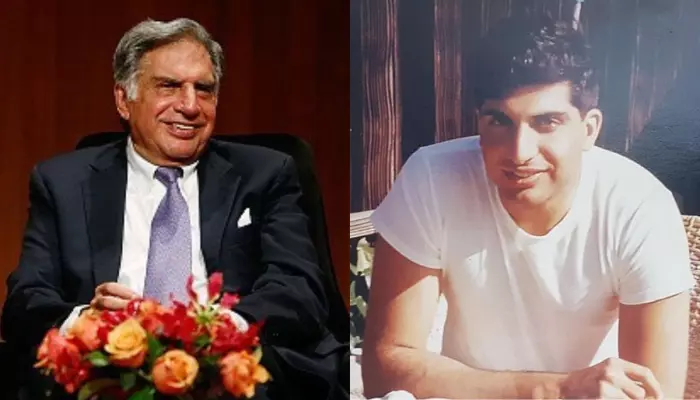Air India’s Maharaja mascot has become a timeless icon of Indian aviation. Dressed in his signature red attire, sporting a grand moustache, the Maharaja has been welcoming passengers aboard Air India flights for 78 years. While Air India’s history is deeply intertwined with the Tata Group, one of the most remarkable events in its modern timeline came in 2022 when Ratan Tata led the acquisition of the airline, bringing it back to the Tata family after 69 years.
Ratan Tata’s vision to revive the airline and the Maharaja brand is yet another milestone in the long and storied journey of India’s national carrier.
The Maharaja: A Mascot Born in 1946
Air India’s Maharaja, with his regal appearance and endearing persona, was introduced in 1946. The creative mind behind this beloved character was Bobby Kooka, Air India’s commercial director, and artist Umesh Rao from J. Walter Thompson Limited. The idea was to present the mascot as a symbol of service, representing the welcoming, hospitable nature of Air India’s crew and flights. Despite his royal looks, Kooka humorously pointed out that the Maharaja did not have royal blood but instead embodied elegance, charm, and warmth.
In 1946, when the Maharaja first came into being, Air India had already started building its reputation globally. The mascot was designed to boost the airline’s image as a premium, global service provider.
A Global Traveler: Maharaja’s Adventures
Through the decades, the Maharaja became more than just a mascot; he became a global symbol for Air India, adding a distinct charm to the airline’s brand. The Maharaja was not limited to Indian borders; he traveled to major global cities like Rome, Paris, London, and New York, where he was often depicted in romantic and playful adventures. In Paris, for example, he would be seen courting women, while in Tokyo, he could be spotted as a sumo wrestler, blending into the local culture with a humorous touch.
This creativity helped Air India build its brand overseas, making the Maharaja a familiar figure across continents, from the beaches of Sydney to the streets of Moscow.
The Maharaja’s Makeover: Staying Relevant with Time
Despite his playful persona and charm, the Maharaja wasn’t immune to change. As times evolved, so did the mascot. In 2015, Air India gave the Maharaja a makeover. His iconic, slightly rotund figure was slimmed down, and he was seen wearing modern clothes like jeans, while still retaining his distinctive mustache. The purpose of this transformation was to make the Maharaja more relatable to modern travelers, while still keeping his heritage intact.
The change reflected Air India’s attempts to appeal to a younger audience while maintaining the nostalgia associated with the brand.
Air India’s Humble Beginnings Under J.R.D. Tata
While the Maharaja captured the world’s attention, Air India’s journey began long before the mascot came into existence. In 1932, legendary Indian industrialist Jahangir Ratanji Dadabhoy Tata (J.R.D. Tata) founded Tata Airlines, which later became Air India. The airline’s humble beginnings can be traced back to a thatched hut at Juhu Airport in Mumbai, where J.R.D. himself flew the airline’s first commercial flight in a small aircraft named Puss Moth.
With a single pilot and two trainee mechanics, Tata Airlines started from scratch, growing into one of the country’s most recognizable names in aviation. In 1946, the airline’s name was officially changed to Air India Limited. Seven years later, in 1953, it was nationalized by the Indian government.
Maharaja’s Role in Air India’s Global Branding
By the time Air India was nationalized, the Maharaja had already begun establishing himself as the face of the airline. He played a pivotal role in branding Air India as a prestigious, luxury airline in the international market. Wherever the Maharaja went, he added a layer of cultural familiarity and humor, making Air India a favorite among passengers.
Not only did the Maharaja become a global icon, but he also became a symbol of India’s ambitions in the aviation sector. Whether playing a magician in Moscow or sporting a dhoti-kurta in India, the Maharaja personified India’s spirit of warmth and hospitality, making passengers feel welcomed wherever they were flying from.
Ratan Tata’s Bold Move: Bringing Air India Back Home
Despite Air India’s global success, the airline went through turbulent times, accumulating debt and struggling to maintain its profitability. In 2021, after decades of government ownership, the Indian government decided to privatize the airline once again. Ratan Tata, known for his bold moves and visionary leadership, stepped in to reclaim Air India for the Tata Group.
In 2022, the Tata Group acquired 100% ownership of Air India for ₹18,000 crore, bringing the airline back into the fold of the Tata family. This monumental acquisition marked the return of the Maharaja to his original home, under Tata’s leadership. Ratan Tata’s decision was driven not only by business but also by his deep personal connection to the airline, originally founded by J.R.D. Tata.
Air India’s New Chapter: The Maharaja Lives On
In 2023, Air India introduced a new logo, the “Vista,” representing a golden window opening to future opportunities. Despite this rebranding, the airline made it clear that the Maharaja would remain an essential part of Air India’s identity. The mascot has stood the test of time, and while the airline embraces new changes, the Maharaja continues to represent the heart of Air India’s heritage.
Air India Today: A Modern Airline with Deep Roots
As of 2023, Air India operates 102 flights across domestic and international routes. With its main hub at Indira Gandhi International Airport in New Delhi, Air India is India’s second-largest airline by number of aircraft and international destinations, flying to over 60 cities across five continents.
While the airline continues to modernize and expand, it remains deeply rooted in its rich legacy—one that the Maharaja has symbolized for nearly eight decades. From serving heads of state like the President and Prime Minister to everyday travelers, the Maharaja continues to be a symbol of Air India’s commitment to excellence in aviation.


